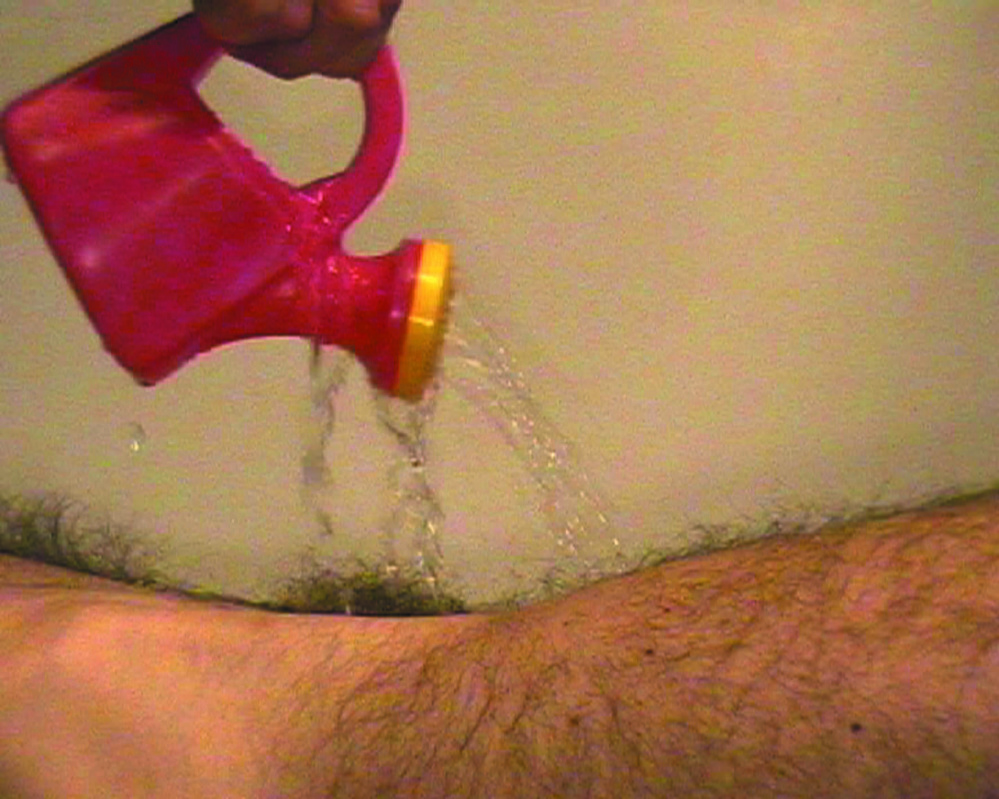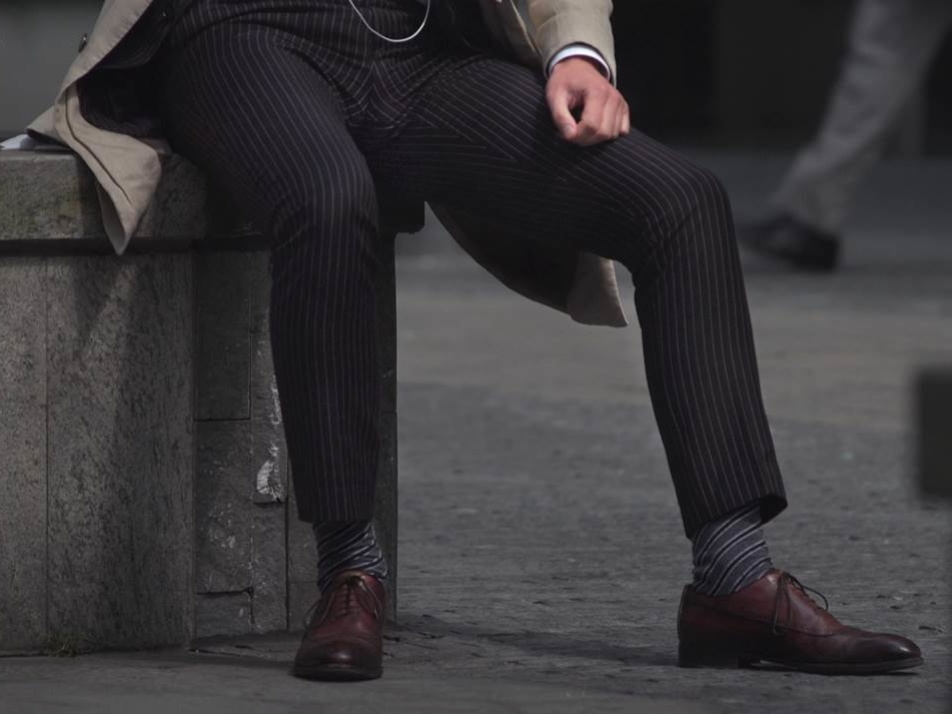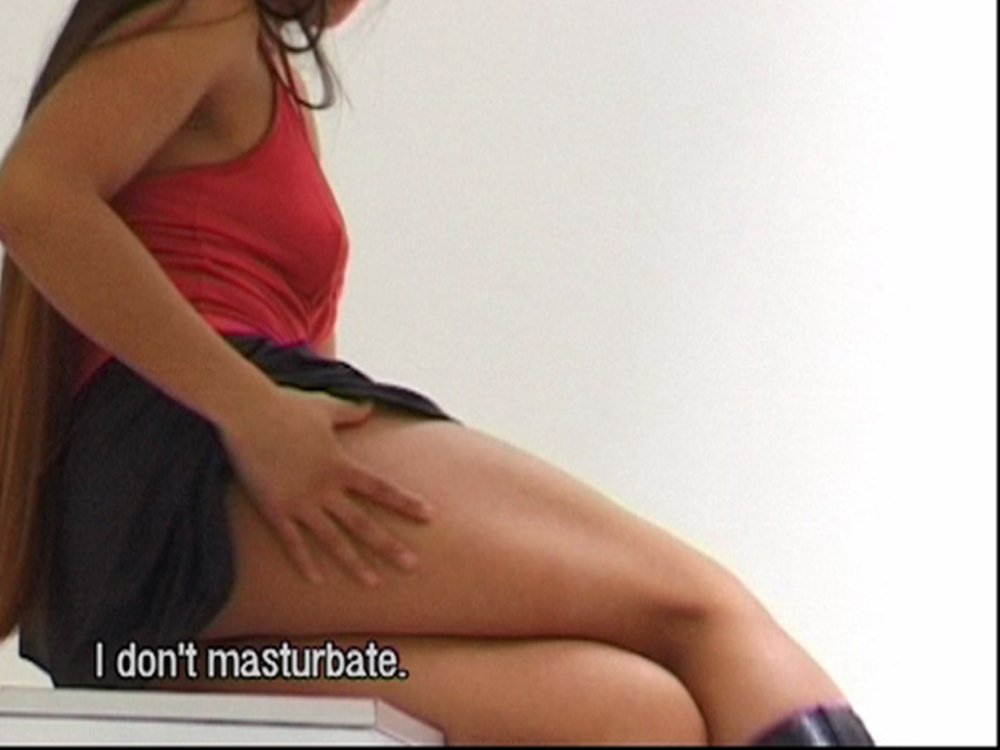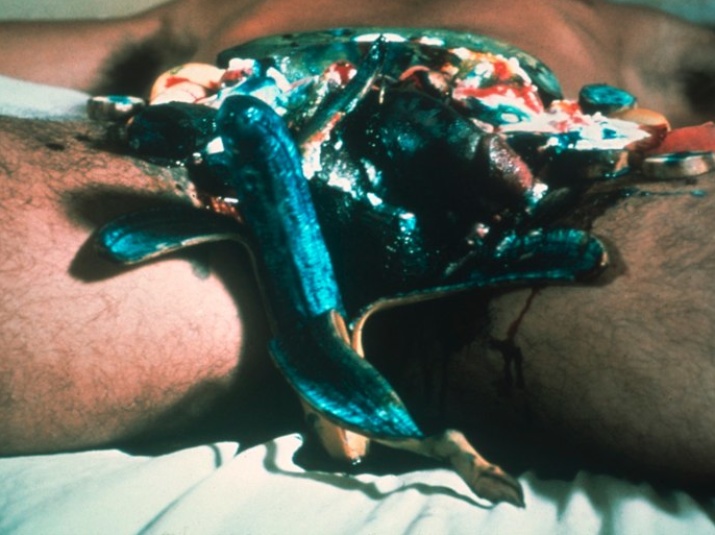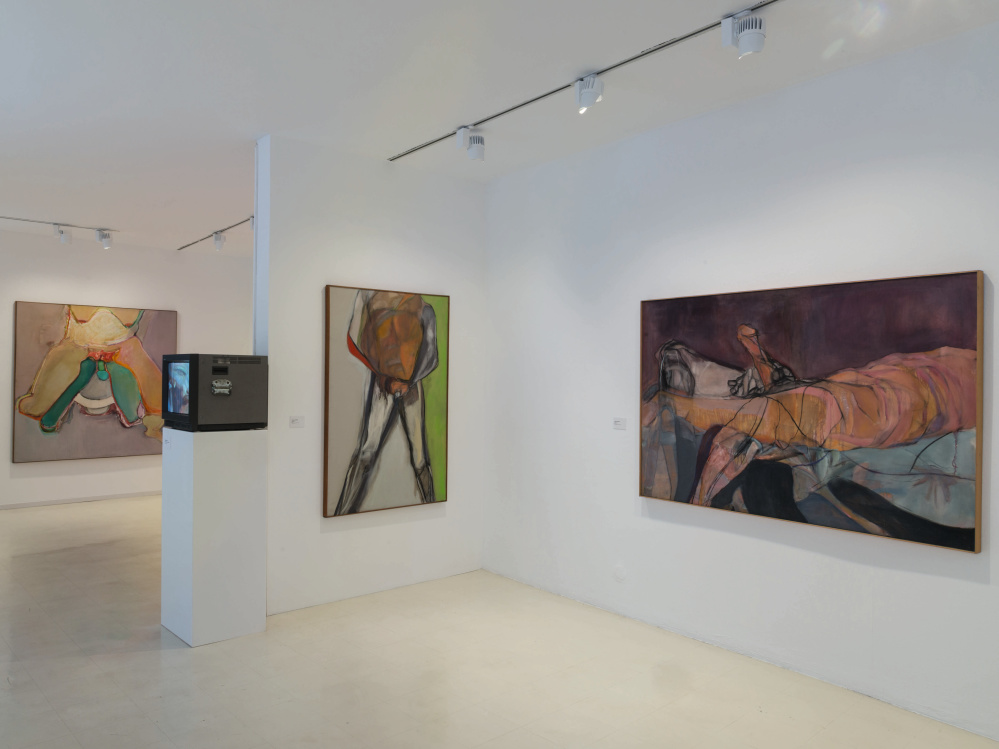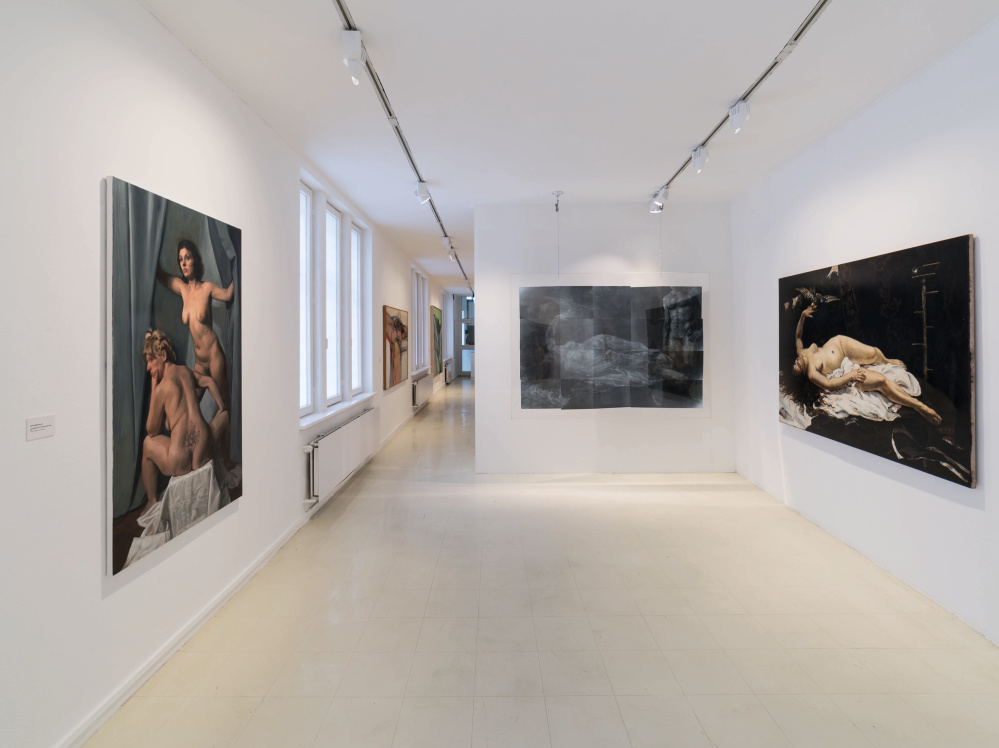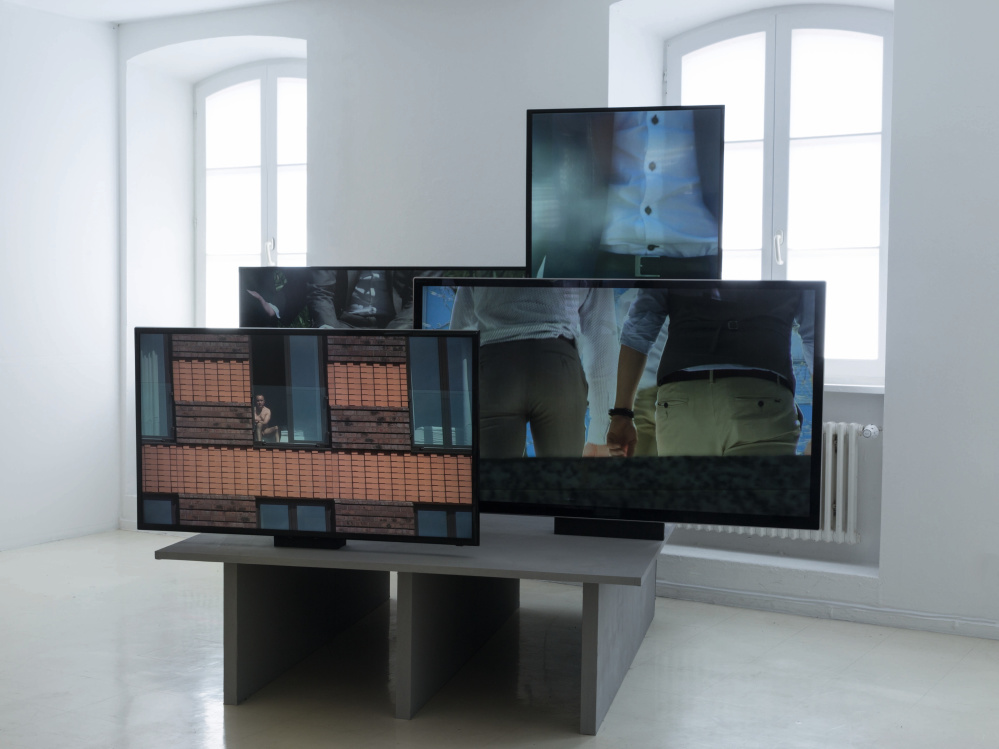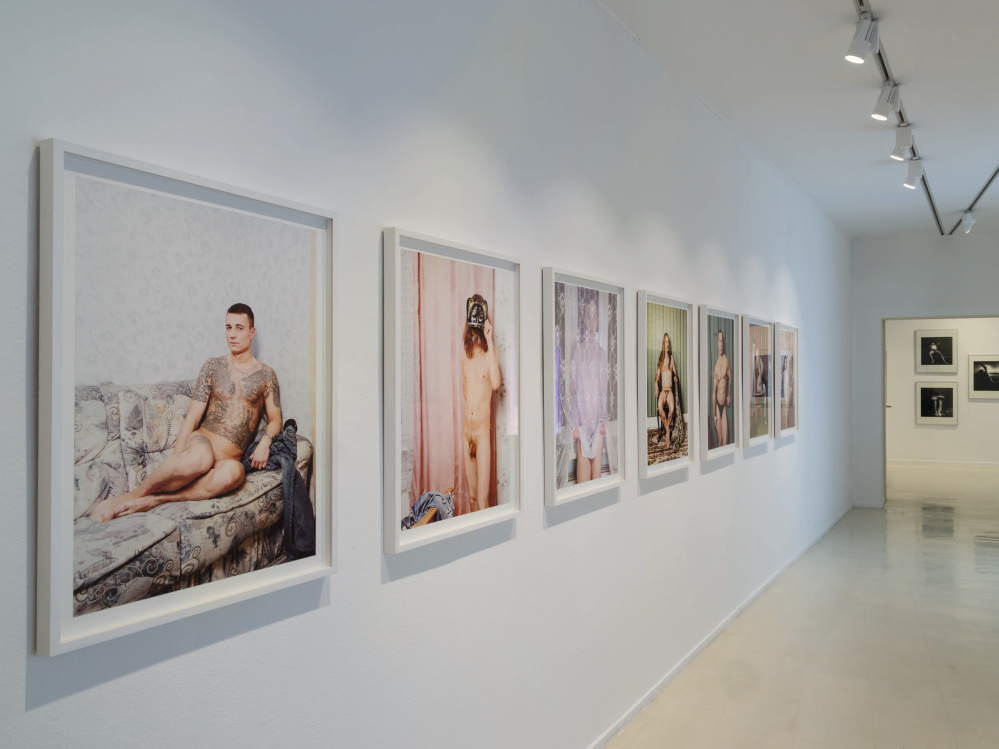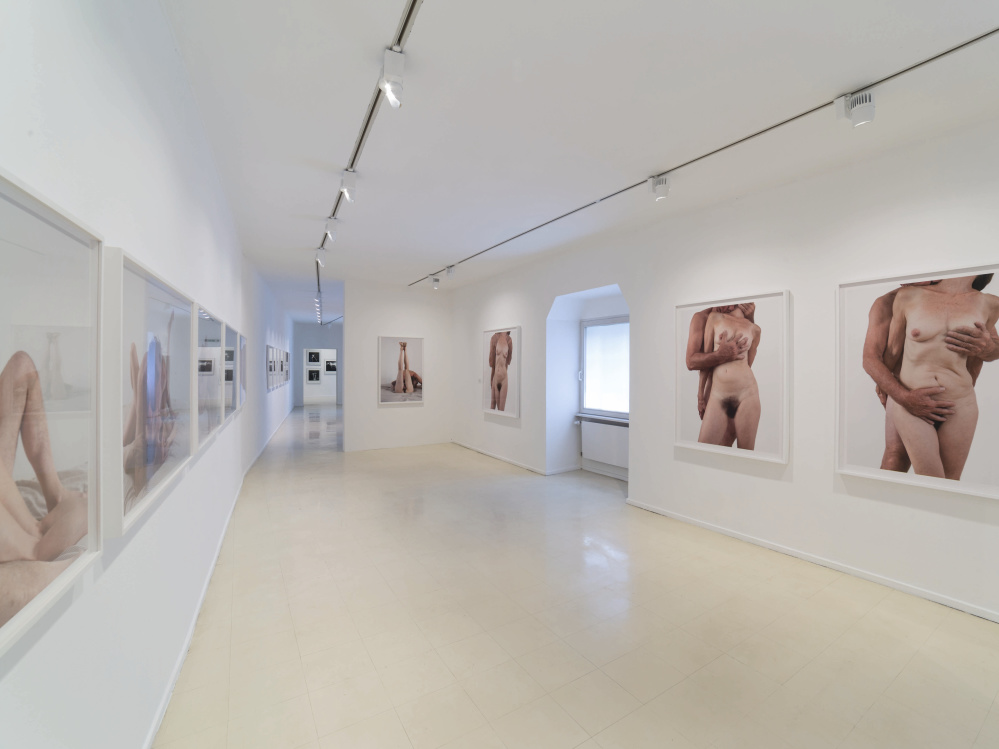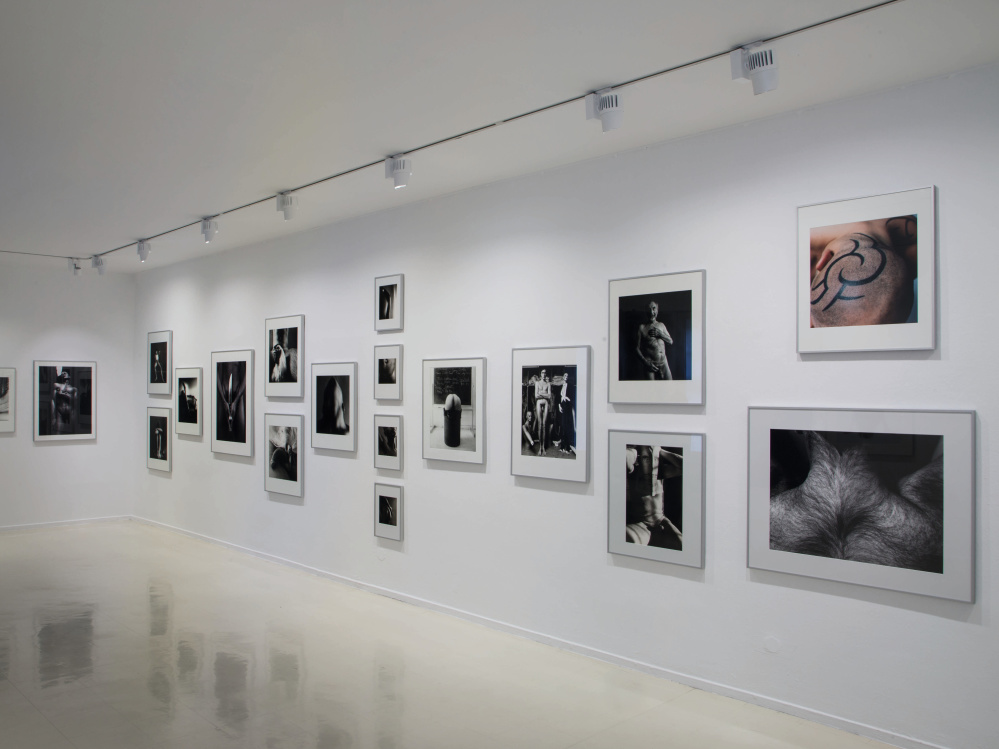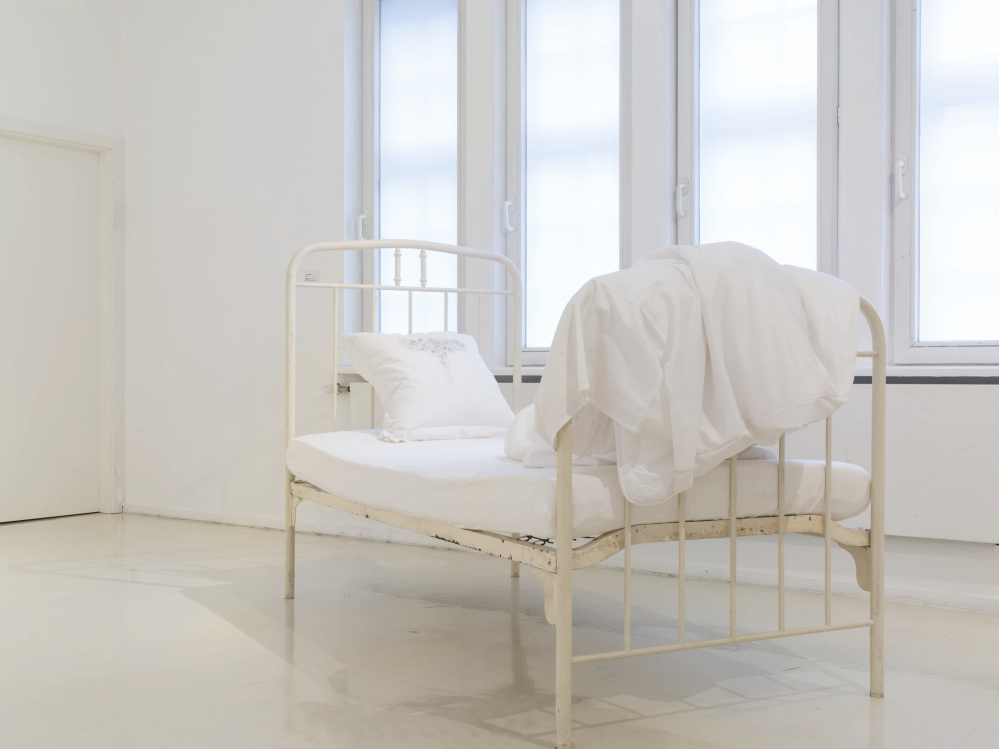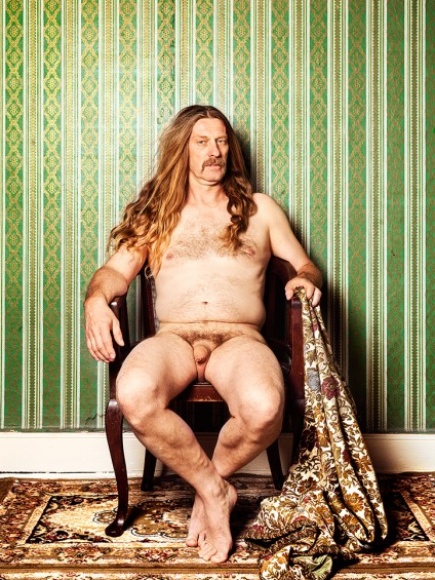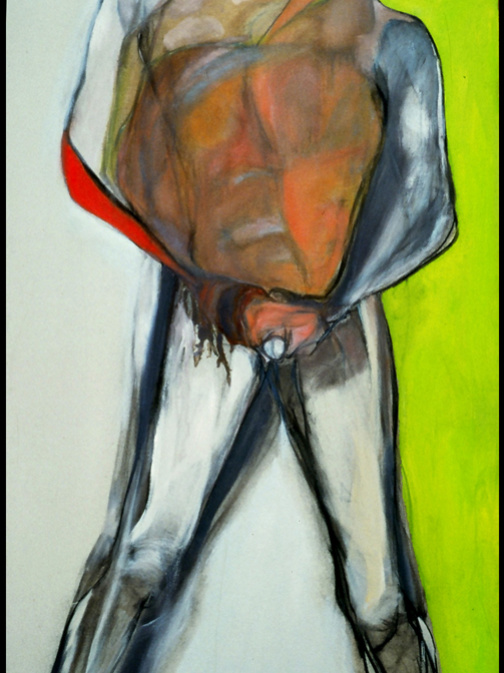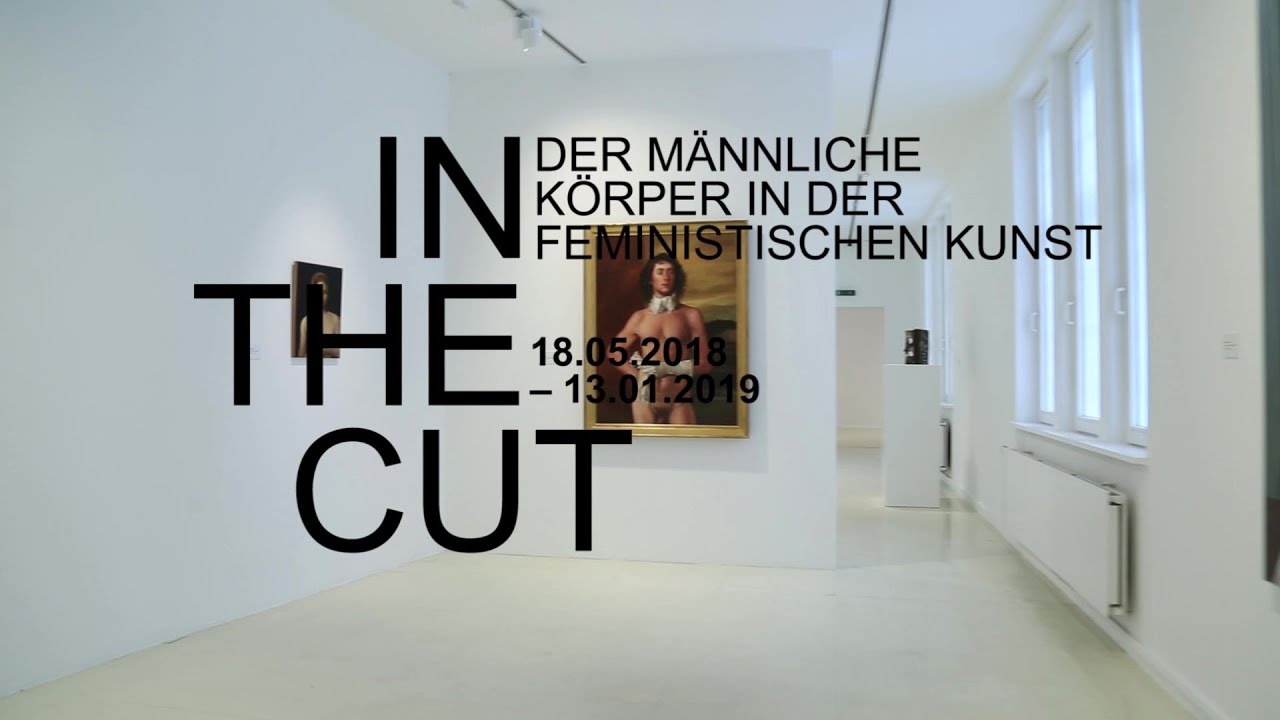IN THE CUT- The Male Body in Feminist Art
18.05.2018-13.01.2019
Sexuality has played a decisive role in the history of art ab initio. Until the 1970s, however, it was the male gaze at the female body which informed the politics of these images. In the first feminist examinations of the erotic which followed, woman artists also focused their explorations on their own body. The (hetero)erotic female gaze, on the other hand – directed at the male body – continues to be an exception in art. When feminist artists take a desirous look at the male body they break more than one taboo and reverse the power relations inherent to the traditional canon of images. With their own depictions of the erotic male body they raise a claim to sexual self-determination and artistic authority. At the same time they question determined role models and open up the discourse for new options of sexual identities.
Artists like Louise Bourgeois (US), Eunice Golden (US), Herlinde Koelbl (DE), Carolee Schneemann (US), Joan Semmel (US), and Betty Tompkins (US) pushed the development of these feminist approaches from the 1960s onwards. So their work determines this internationally set exhibition along with that of the next generation, including Sophie Calle (FR), Anke Doberauer (DE), Tracey Emin (GB), Alicia Framis (ES), Kathleen Gilje (US), Aude du Pasquier Grall (FR), Anna Jermolaewa (RU), Julika Rudelius (DE), Mwangi Hutter (KE,DE), ORLAN (FR), Jana Sterbak (CAN), Susan Silas (US) and Paula Winkler (DE).
The exhibition comprises not only first-wave feminist works, but the work of a younger generation as well, who depict the desirable male body, either in its own right or by way of an encounter with their own bodies. Here, the man is both an object of desire and a character with agency. Formally, these male portraits do not necessarily differ from homoerotic depictions. A woman, however, is always present as the artistic subject. Perhaps it is because she allows the models to display vulnerability, imperfection, and individuality: a concession which makes them, in turn, all the more desirable. In other cases, we are confronted with objects, tapestries of sound, and video images which contain deliberately placed traces of female sexual activity.
The distinctiveness of this exhibition’s approach, however, lies also in its creating a platform for woman artists to explore a subject which remains taboo for women; that is to say, it gives private female sexuality – a subject with has been either excluded or ignored by social, artistic, and even feminist discussions – a stage for artistic expression. Although curiosity for the female body’s sensuality and the desire which it inspires have long been a source of creative impetus and a central theme of the artistic production for many male artists, the sensual gaze upon the male body remains an exception in the work of woman artists.
A catalog will accompanying the exhibition (310 pages, German/English).
